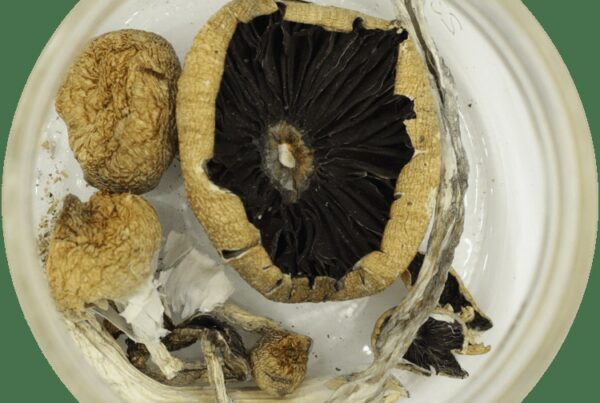Psilocybin mushrooms, a traditional psychedelic, function similarly to LSD as a serotonin 5-HT2A receptor agonist. Presently, these mushrooms are under research for their potential in psilocybin-assisted therapy for emotional distress related to major depression, anxiety, cluster headaches, and migraines.
In order to grasp how shrooms can help with these conditions, it’s vital to explore how they are metabolized within the body. This knowledge enables both researchers and users to understand how the active compound produces its psychological and therapeutic effects. This article offers a basic explanation of psilocybin’s pharmacology and pharmacokinetics.
[toc]
Key Takeaways:
- When ingested orally, half of the psychedelic fungi is absorbed and distributed throughout the body.
- Primarily in the liver, the fungi compound undergoes dephosphorylation via the enzyme alkaline phosphatase.
- Within 24 hours, around 3.4% of the compound is expelled in its original form, with most of it being excreted as a stable metabolite.
What is Pharmacokinetics?
Pharmacokinetics (PK) studies how substances like drugs are processed by the body after ingestion. While related, it is distinct from pharmacodynamics, which studies how a compound interacts with the body. PK focuses on four main elements: absorption, distribution, metabolism, and excretion (ADME).
Understanding these processes enables healthcare providers to prescribe the most effective medication with reduced risk. It also allows them to customize treatments to suit each patient’s specific physiological needs and lifestyle.
How Does Pharmacokinetics Relate to Psilocybin?
Psilocybin and psilocin, the primary active compounds in certain magic mushroom species, have attracted significant attention from both researchers and users. Pharmacokinetics explores how the body metabolizes mushrooms containing psilocybin and aids in understanding their potential medicinal or recreational effects.
These compounds, also referred to as “magic,” “psychedelic,” “medicinal,” or “sacred,” are found in fungi that are consumed. The Mushroom species, their place of origin, size, growth and drying conditions, and age can significantly alter their concentration levels.
Although these mushrooms naturally appear in the wild, scientists have managed to create synthetic versions in the lab. Both natural and lab-grown variants have low toxicity levels, but minor side effects like nausea or vomiting may occur.
Notwithstanding these physical side effects, the compounds in these mushrooms present potential therapeutic benefits thanks to their safety profile and non-addictive properties. These advantages have prompted researchers to explore their use in psychotherapy, particularly for treating anxiety and depression.
Four Phases of Pharmacokinetics
Psilocybin, the compound in these mushrooms, is inactive in its original state and serves as a prodrug, transforming into its active form, psilocin. Enzymes such as alkaline phosphatase facilitate this conversion, allowing psilocin to be absorbed and distributed throughout the body, reaching various tissues. Nevertheless, following oral administration, psilocybin cannot be traced in the circulatory system, feces, or urine.
Absorption
Absorption relates to how the compound moves into the bloodstream from its point of entry. It affects how quickly and effectively the compound reaches its target, such as the plasma. The most common method is via oral administration. Inhalation has been tried, but it is not as effective as swallowing.
The absorption process also involves the compound’s release from its dosage form during oral intake. Factors like a delay in the throat or esophagus can alter this, possibly leading to slower results or irritation. Once the compound arrives in the stomach, the acidic conditions may start to break it down before it can enter the bloodstream.
Research on animals suggests that only about half of orally ingested psychedelics are absorbed and distributed throughout the body.
Factors Affecting the Absorption Process
Various factors can influence the absorption process, leading to variations in the onset, intensity, and duration of effects:
- Stomach Contents: Eating before ingestion can delay absorption as it slows the onset of effects. Conversely, an empty stomach promotes quicker absorption.





